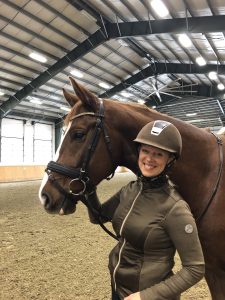
This year has been transformative, reflective and impactful.
I tell my riders when one door closes another one opens, you just have to be willing to find it and brave enough to open it. As a well established coach and athlete in dressage sport, with experience that spans 30 years, and qualifying for the Pan American Games on my trajectory, I was motivated and focused. So when my top competition horse was injured and I was no longer able to campaign him it was a heavy blow, and very disappointing. I felt deflated, 6 years of careful, methodical training and preparation down the drain. Logically, I know this is sport, and no matter how diligent you are in your training processes, horses still get hurt, but for some reason this hit me really hard. Perhaps it was the realization that at this time in my life, the window to be competitive at the international level is shortened, due to the time and effort and physical toll it takes to develop a horse to the Grand Prix. I was in the final phase of a multi-year plan, had my year strategically mapped out and then needed to completely change paths, regroup and set new goals. I needed a challenge. Being accepted into the High Performance and Technical Leadership program was the silver lining in the dark cloud, it was the focus and challenge I needed.
The HPCTL program formalized many of my coaching processes and provided a more in depth understanding of how other sport organizations function. The insights and experiences shared by my cohort and the knowledge imparted to me by the professors provided me with innovative ideas, and inspired me to search for ways to make a difference in my own sport. I realized immediately the value and impact that this program could have on my life and career. I was again motivate and inspired.
The assignments challenged me to critically reflect and formally articulate who I was, who I am, and who I want to be as a coach and leader. They required me to take inventory of the current state of dressage both provincially and nationally, identify gaps, assess strengths and weaknesses and develop action plans to influence change.
Through the program I redesigned my vision and core values, making a commitment to uphold and live them not only professionally, but personally as well. I restated my endeavour to create safe, fun, and effective programs with a focus on teamwork and respect, promoting a continuum of learning, horsemanship, and sportsmanship. I approach my coaching, training, competing and mentoring roles in alignment with my core STAIR values of Safety, Teamwork, Accountability, Integrity and Resilience, they consistently inform my decisions and guide my interactions.
“My vision is to serve as an ethical, knowledgeable and relevant resource for equestrian athletes and their equine partners to realize their full potential, and to exert a powerful, positive influence on the dressage industry in Canada”.
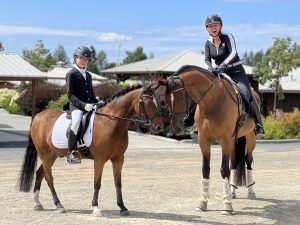
A building block in my coaching practice is valuing and respecting self, others, horses, and the rules of sport, as this contributes to more meaningful interactions and positive experiences in competition. I encourage riders to think critically and reflect on training sessions and competitive performances to improve problem solving skills, promote independence, and increase confidence in their abilities, building a mindset for continuous improvement. I believe as coaches we have the platform and opportunity to create cohesive environments of trust, camaraderie, and sportsmanship through impactful, respectful interactions, which in turn, facilitate mentorship, guidance, and support both in sport and life. It is a privilege to guide and impact others and we need to remain humble and vulnerable, while being strong and effective. In my role as a coach developer, I encourage this mindset of humility and autonomy supported coaching in coach candidates as they work towards their certification goals.
The Leadership Practices Inventory and 360 Survey were valuable exercises, the results spurred me to ask for feedback from athletes and stakeholders, engage others through sharing my vision for the future, and collaborating to reach common goals. The NCCP Coaching Competency Blogs challenged me to take inventory of my past and current coaching practices. This process of reflection has increased my self awareness. I am more purposeful and mindful in my interactions, recognizing the influence I have on others, while carefully considering how my decisions can contribute to more meaningful experiences, and affect our sport on a broader scale.
One of the highlights of the year was collaborating with CSI Pacific and Horse Council British Columbia to develop a Talent Identification criteria for dressage athletes. This is a necessary stepping stone to support the development of more well-rounded athletes earlier in their competitive career, providing a solid foundation for continuation in sport towards high performance and potential national team selection. Further collaborations include working with Equestrian Canada on the development of their Gold Medal Profile and creating additional Professional Development courses for Horse Council BC.
Another program I am implementing this year is STAIRway to Horsemanship. Aligning with my core values of STAIR I designed a horsemanship model to incorporate into my Fit To Ride Youth Dressage camp. Currently, there is a lack of horsemanship understanding and training opportunities in our young riders and coach candidates. Due to the i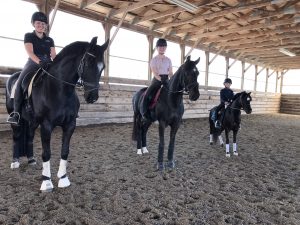 mportance of horsemanship both for horse well-being and successful competition, I feel strongly that this needs to be addressed. With the STAIRway to Horsemanship model I seek to bridge this gap and implement it into future programs.
mportance of horsemanship both for horse well-being and successful competition, I feel strongly that this needs to be addressed. With the STAIRway to Horsemanship model I seek to bridge this gap and implement it into future programs.
Inspired by the presentations and discussion of soft eye, I incorporated the use of camera sunglasses into some of my high performance athletes training sessions. The goal was to improve accuracy of technical movements by developing awareness of focus points and eye line. Due to the horse’s sensitivity to balance shifts in the rider’s body, the rider’s eye line directly affects the horse’s line of travel, which in turn affects performance accuracy and balance. I am looking forward to using these more in the future and track the improvements.
Overall, this has been a productive, inspiring year, and I look forward to giving back to an industry that has provided me with so much throughout my career. I’m grateful for the connections with my cohort, thank you all for your insight, feedback and sharing your experiences. I admire each of you for the work that you do, and look forward to staying connected in the future.
Happy trails until we meet again!
Sandra
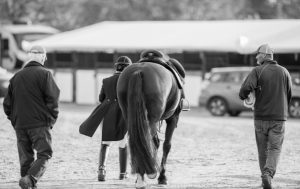

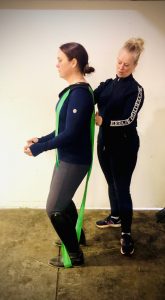
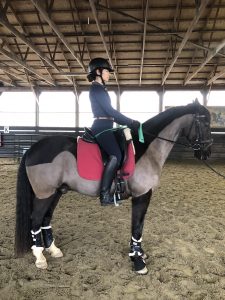 December 28, 2023
December 28, 2023 Blog #3 Critical Thinking & Yearly Training Plans
Blog #3 Critical Thinking & Yearly Training Plans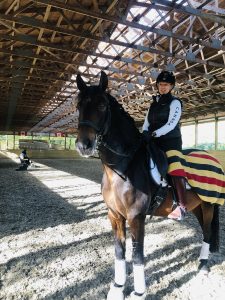 My equestrian leadership roles as coach, clinician, coach developer, committee chairperson and conference presenter have allowed me the opportunity to travel internationally and learn from some of the most renowned coaches, athletes and technical leaders in our sport. As I work through the HPCTL program, I am continually inspired and humbled by the wealth of knowledge imparted to me by the professors and fellow cohort, and as my passion has always been to educate and inspire others, I appreciate the course information and tools gained to recognize where I can improve and elevate my coaching and leadership practices.
My equestrian leadership roles as coach, clinician, coach developer, committee chairperson and conference presenter have allowed me the opportunity to travel internationally and learn from some of the most renowned coaches, athletes and technical leaders in our sport. As I work through the HPCTL program, I am continually inspired and humbled by the wealth of knowledge imparted to me by the professors and fellow cohort, and as my passion has always been to educate and inspire others, I appreciate the course information and tools gained to recognize where I can improve and elevate my coaching and leadership practices.